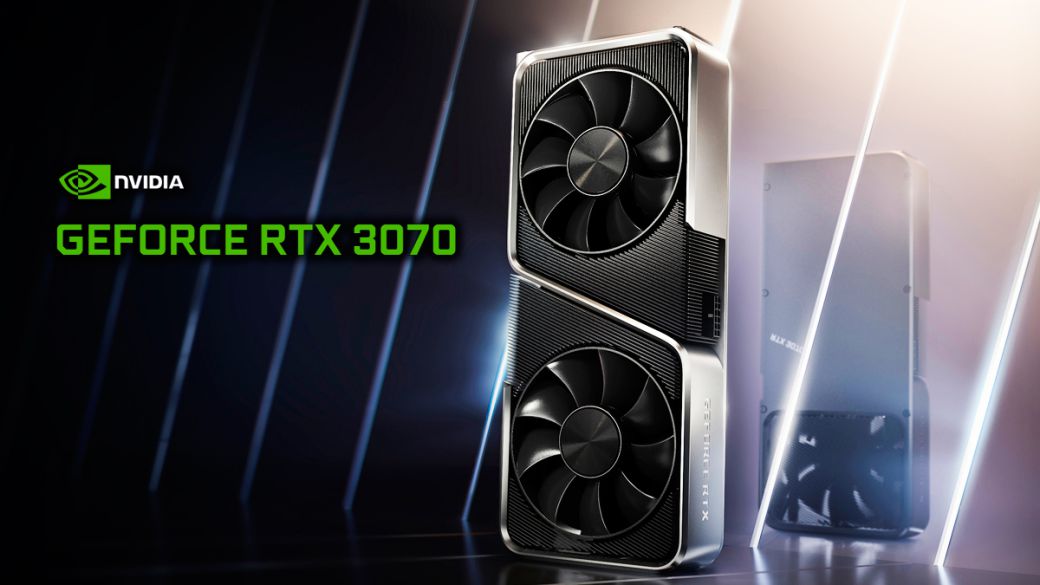
The best of the best? We analyze a proposal that comes at a complex time and is postulated as the perfect GPU.
The new RTX 3080 and 3090 aren’t going to be the best deal for NVIDIA and its assemblers. They will not be the same as the 2080, 1080 and other “flagship” of the manufacturer were not. As usual, the 70 best-selling cards will once again be the ones that will mark where the technological bar of the generation remains. The company presented its new cards for Spain and its launch date and we have been able to test the 3070 thoroughly and we are clear that it is here to stay for a long time.
The business is in the mid-range, where most of the users can aspire. The demonstrations of strength of the 3090 are good to know how far this technology reaches, but, as users, what we are interested in are products where the benefits and the price are compensated; what we could call a smart purchase. And that’s where the 3070 is THE card to go.
NVIDIA hit the table with its RTX 30 series and finally put very compromised possibilities for previous generations within our reach, such as RTX lighting and 4K resolution. What at the beginning of this year was an unreachable dream for most gamers, this generation of GPU has brought it closer to the point where the expected step between the standard of 1080 and the future of 4k, is going to be a lot more fleeting than we all anticipated.
With both its raw power and its architecture, the 30 Series promises a remarkable graphical leap, which will become even more apparent as game developers learn to harness them. And within the series, after seeing the final prices and yields, the vast majority of eyes are directed at the little one of the family, the 3070. It has everything to attract our attention and from its very presentation it took over the best slogan advertising: Same returns, at half price. The almighty 2080Ti and its € 1,300 crushed by the cheapest of the new series, a card of only € 519 …
Just a handful of days later, AMD is in a counteroffensive. It is also something classic since even before the arrival of AMD itself, when the aspiring Radeon was signed by an already historic ATi. The difference today is that, finally, it seems that the fight is going to be really balanced, disputed, the kind that are so interesting for the viewer.
So, with all the information on the table, after a week using the 3070 Founders Edition provided by NVIDIA, we can assess, from all perspectives, what this manufacturer is proposing to us for this generation.
The card:
From the outside in, the NVIDIA-designed Founders Edition is the most elegant and attractive of the many graphics we’ve seen. An aluminum block, in two shades of gray, two 80 mm fans, the aluminum profile in the shape of an “S” that surrounds it… no big logos, no RGB… It is really attractive to look at. And very small and light!
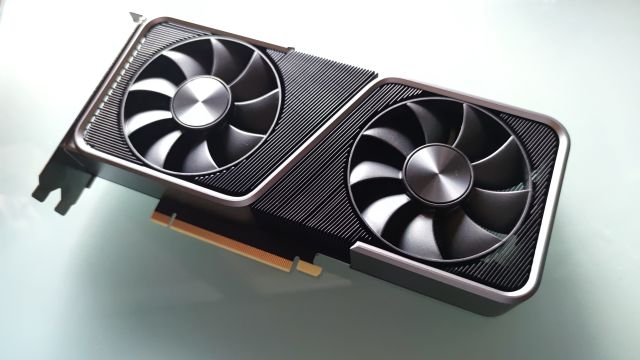
Although it still occupies two slots, its dimensions are quite contained, limited to 242x112x40 mm … That is 43 millimeters shorter than the 3080, a difference in size that makes them compatible with most of our boxes. Dimensions that are well portrayed if we look at the weight of the card, slightly higher than a kilo (1035gr), three hundred grams less than the 3080 and less than half the weight of the gigantic 3090 (2160gr).
On its spine there are three DisplayPort 1.4a connections, whose data flow allows playing, through DSC compression, in 4k at 144Hz, or in 8k at 60 Hz, and a single HDMI 2.1 connection, the next standard in multimedia connection. The 48 Gbps of this port (compared to 18 of HDMI 2.0) will allow not having to compress the signal using DSC to reach those same settings. Of course, it has the well-known PCIe 4.0 compatibility (in addition to the current 3.0), which will soon become the standard for new motherboards as well.
The TDP consumption is 220W content, a value similar to the “old” RTX2080 and which is far from the 320W of the RTX3080. On the go, NVIDIA’s cooling / cooling system proves to be very effective, although without much fanfare. It behaves like a fairly silent card, even when it is most demanded of it. In addition, the dissipation and ventilation system maintains a temperature ceiling that is between 70 and 75 degrees Celsius. Assemblers from different brands will continue to make their own designs and win over customers with bigger fans, RGB and heatsinks in aggressive ways, but admittedly this NVIDIA design is really effective.
Part of this satisfaction generated by the design is lost by the use of the 12-pin connection; first, because of its location, which completely breaks the aesthetics of the card and, second, because of the inclusion of a more than necessary 8-pin adapter that ends up making the very need for that connection questionable.
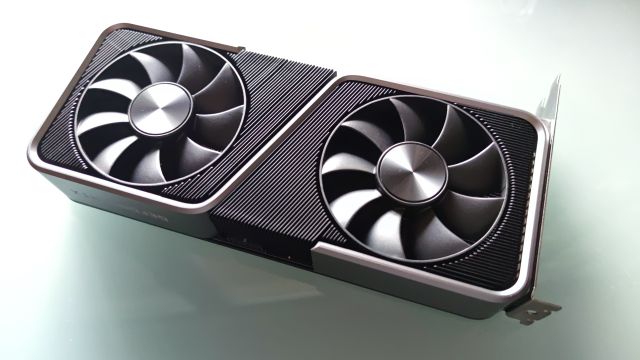
Focusing on the heart of the card, that Ampere GA104, we will put it in perspective with respect to its direct competition with its brothers in the following table:
| 2070 | 2080 | 2080Ti | 3070 | 3080 | |
|
Transistors (billions) |
10.8 | 13.6 | 18.6 | 17.4 | 28 |
| Base Frequency MHz | 1410 | 1515 | 1350 | 1500 | 1440 |
| Boost frequency MHz | 1620 | 1800 | 1545 | 1725 | 1710 |
| CUDA cores | 2304 | 2944 | 4352 | 5888 | 8704 |
| VRAM GB GDDR6 | 8 | 8 | eleven | 8 | 10 GDDR6X |
| Bit memory bus | 256 | 256 | 352 | 256 | 320 |
| GB / sg bandwidth | 448 | 448 | 616 | 448 | 760 |
| Consumption in W | 175 | 225 | 250 | 220 |
320 |
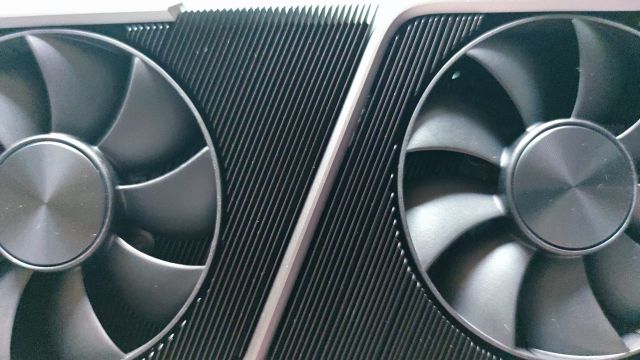
Understanding this table seems fundamental to us to know how to properly locate these 3070 in the market. If we put them in perspective with respect to what we could consider its predecessor, we observe great differences with respect to the number of transistors, which almost doubled thanks to the evolution in manufacturing technology. Recall that the previous generation (Turing) was manufactured with 12nm technology, while Ampere is based on the 8nm that the manufacturer Samsung has reached. While the biggest difference is in the CUDA cores, which almost tripled, a circumstance very indicative of where NVIDIA wants to take the future of graphics hardware.
On the contrary, we observe that the 3070 have exactly the same memory, and in the same quantity and frequencies, as the 2070 and the 2080. Of course, the new architecture with 8nm manufacturing and the greater number of calculation cores, even Without seeing a single benchmark, they make the 3070 a favorite, but what happens when we face it directly with the card that has come to beat, the 2080Ti?
If we cross 3070 and 2080Ti we can understand exactly how a processor evolves. We see how the “old” 2080Ti has three more gigabytes of memory and a higher data throughput, 352 bits compared to the 256 bits of the 3070. This allows the bandwidth to be notably higher, 616GB / sg compared to 448GB / sg of the 3070. On the other hand, the 2080Ti has a greater number of transistors, almost a billion more, although to contain them, being manufactured in 12nm, it requires a DIE size that is almost double that of the 3070. Regarding frequencies, Those extra 200 MHz of the 3070 are another point that adds in its favor thanks to the aforementioned 8nm.
And now let’s put the 3070 in front of its older sister, the 3080. Eleven billion more transistors, about three thousand extra CUDA cores and a juicy 10GB of GDDR6X memory (remember that the 3070 has GDDR6, identical to the previous one Turing generation). A memory of 320bit that reaches 760GB / sg, compared to 448GB / sg of the little sister.
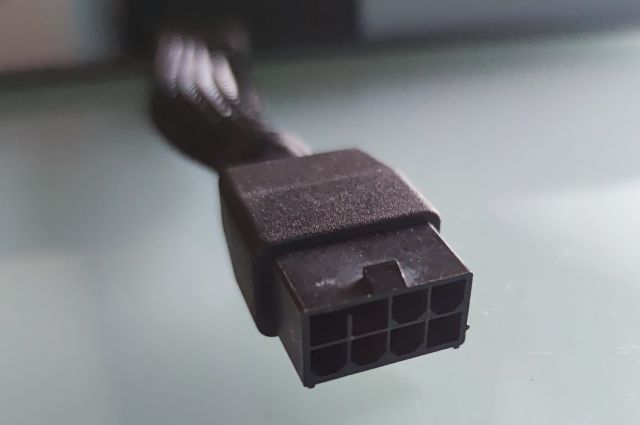
Yields
It is necessary to attend to these figures to give the adequate value to the 3070 performance today. After a week with the card we can confirm that it is effectively equal in benefits to the 2080Ti. However, the differences between both hardware exist and become greater in terms of the software used and its configuration.
Thus, the 3070 easily beats the 2080Ti when the resolution is lower (1080), than when we demand the maximum (4K). The amount of memory becomes an advantage for the 2080Ti. On the contrary, next-generation games, where the memory requirement is already beginning to question the 8Gb of the 3070, are benefited by a better use of its many calculation cores, compensating for the performance.
On the other hand, far from gaming, professional video software is a huge RAM hog, and the 2080Ti again scores slight advantages.
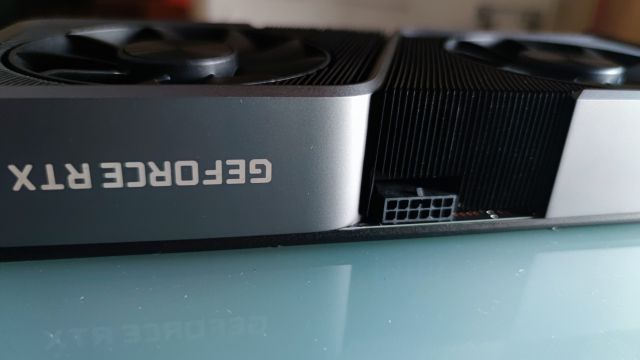
In any case, there is no discussion and what was announced by NVIDIA about this 3070 is confirmed; it literally wrecks the 2080Ti. Not by surpassing it in yields, as we have seen, but because it achieves those yields with much less energy, less temperature, less noise and, above all, at a much lower price. If we take the quotient that indicates the value of each frame obtained in whatever software, with respect to the cost that each card entails, the 3070 sweeps the 2080Ti. And that’s not counting the projection that this newer hardware has in the face of software that, little by little, is going to be optimized to make the most of its architecture.
When we cross the 3070 with the 3080 we enter a much more interesting terrain. NVIDIA’s maneuver of comparing 3070 and 2080Ti has been very successful in order to send the message to buyers that they offer for € 519 the power that yesterday cost € 1,300. The difference is such that both hardware will never be able to compete as equals. What’s more, even at the same cost, the advantage of the 3070 would be equally clear.
With this outlook, any buyer who is convinced by the green brand will have their doubts between two products: 3070 and 3080.
We assume that in this Ampere generation there is a circumstance that is always desired, but that is not usual. The price difference between a 3070 and a 3080 is directly related to the difference in their returns. Right now, with the recommended prices, the 3080 costs between 25 and 30% more than the 3070 and that is more or less the difference in performance between the two.
However, this is a temporary difference, closely linked to current software. As new games arrive, with more graphic demands, the differences will increase. It is an easy bet to hit the mark by observing the extra 2Gb of the older sister and its bandwidth that almost doubles that of the 3070. The same happens with the CUDA cores and more transistors. As developers learn to get more out of these architectures, they will make them decisive and the 3080 will arrive much better armed at that time.
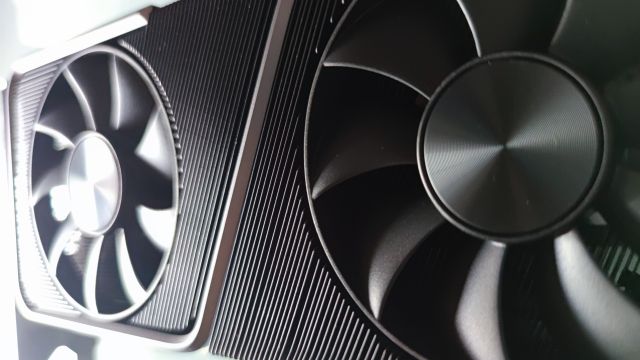
Also, the best news that NVIDIA brought us with this 30 series is that 4K is not that far off. With this 3070 we have played almost everything in 4K with frequencies above 60FPS, but the 3080 already shows itself as a much more suitable card if what we want is to buy a monitor with that native resolution.
In short, the 3080 is consolidated as a much rounder hardware than this 3070, with much better projection and useful life … with the only disadvantage being that € 200 difference.
And AMD came
We could have analyzed this product without attending to what was proposed by its competition, but it would not be consistent with the objective of these articles. And it is that just a few days after the presentation of NVIDIA, AMD launches its new generation of graphics and, in the absence of being able to hold them in hand, this time it seems that a fierce fight is going to take place. Unlike the NVIDIA hardware, which we have already been able to test, the AMD hardware we only have their theoretical figures and many doubts, but it is clear that we are facing some very interesting months.
Although there are issues that are comparable, such as the amount of memory and its data throughput, frequencies, prices … they are very different architectures. In the same way, each manufacturer makes different proposals that only time will value. From NVIDIA, the bet that we like the most is that of the RTX, a field in which it has been longer than AMD and where it has more experience and “know how”.
Something similar happens with the DLSS 2.0 and its “magic”. We are not a few who are convinced that the great RTX revolution was not Ray Tracing itself, but Artificial Intelligence applied to graphic improvement. We did not believe it with that first version that introduced the 20 series, but it must be recognized that this version 2.0 of the DLSS works wonders and for the first time breaks the logic that to obtain more frames per second more powerful hardware is necessary. In addition, NVIDIA has “extras” such as RTX IO, Omniverse Machinima, NVIDIA Broadcast …

In the rival field, AMD aligns an equally promising technology, such as the “infinite cache” that transversally solves the ceilings that current technology was meeting with the memory bandwidth.
However, the great asset of AMD is yet to come and it is its asset of being the only manufacturer that designs and produces CPUs and GPUs. The symbiosis between Ryzen and Radeon is really promising.
Conclusions
The 3070 is probably one of the most interesting hardware that NVIDIA has released. Its own conception, as the card with the best performance price within the range of cards that represent the greatest technological leap since GeForce, would make it an object of desire.
Everything is in favor of the 3070 to be our favorite. Everything, except something fundamental: the moment they reach the market.
That moment cannot be worse for this hardware because there are too many negative currents towards NVIDIA. On the one hand we have a planet completely slowed down by the COVID-19 pandemic. From the very conception of the hardware and software, their manufacture, distribution … everything is working significantly worse than in a normal situation.
That situation only compounds the obvious problem that NVIDIA has in responding to its strong demand for the product. Samsung’s 8nm output seems to be underperforming. Something similar happens with GDDR6x memory, expensive and complicated to produce. All this comes together in a reality: there are no NVIDIA cards for sale and, those that are, are offered for prices much higher than those that correspond to them.
So even if we were convinced to buy our RTX 3070, we couldn’t.
Nor is it the best time for this card after AMD’s announcements. On the way out, the red manufacturer promises to have enough hardware to respond to the demand. Its GDDR6 memory is cheaper and more accessible, TSMC does not seem to have production problems with its 7nm lithography and in a matter of days we will begin to see Benchmarks that really put the whole family of graphics hardware in their place that will fight our hearts and pockets. in 2021. In short, recommending the purchase of a 3070 today is quite unwise.
If we look ahead, even more doubts assail us. And it is that the expectations proposed by both NVIDIA and AMD represent such a big step forward, that the small of the 30 series may be left behind too soon.
Your Achilles heel is your memory. 8GB of VRAM is more than enough for practically all current games, however, we see that games like the imminent CoD Black Ops Cold War, Assassin’s Creed: Valhalla, Watch Dogs Legion … or not so new, like Battlefield V, in its maximum graphics quality settings are consuming about 6GB of VRAM. That still allows room for the 3070’s 8GB, but until when?
And this is the technical lack; the real. There is another lack that is even more worrisome and that is commercial. Once the market has both generations of graphics cards, the panorama will show about 3090 with 24GB GDDR6x, about 3080 with their corresponding 10GB GDDR6x … all the new Radeon with a minimum of 16GB GDDR6 … and the small 3070 with its 8GB GDDR6. Although the difference of those 8GB between a GeForce RTX 3070 and the 16GB of a Radeon 6800 are not yet decisive in our computers, they do seem to be too much on paper. It is a figure that draws too much the attention of a potential buyer.
With this scenario, the presentation of RTX 3070 with more RAM can not wait too long. Even without knowing the performance of the new Radeon 6800 and 6800XT, the need for NVIDIA to present a hypothetical 3070 Super or 3070 Ti seems more pressing than ever.
All in all, NVIDIA has presented us with an excellent product. A card that, in any other situation, would be a recommendation to the blind eyes; a fixed success for any buyer. However, the timing is so exceptional that this recommendation cannot be so indisputable.
The lack of units for sale forces something that, otherwise, would also be the smartest possibility: wait.
This 2020 will end up marked in red by dozens of extremely negative circumstances, but it will also be the year in which the graphics market took an important step forward. It remains to be seen how the market settles. How the different products of each manufacturer fit together. How they cope with the new software and their differences in performance cause the usual price adjustments. And it will be then, without waiting too many months, when we will see if this RTX 3070 is really the essential purchase that we found in its presentation.
